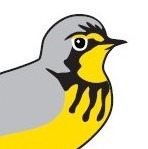
American Goldfinch Photo: ksblack99
This summer, people have been reaching out to our staff at Bird Studies Canada with questions, concerns, and ideas about helping birds. It’s always great to hear from those who are eager to make a difference!
If you’re reading this, chances are that you fit into that category. We created this list for you (and your like-minded friends and family), with suggestions and resources for helping birds at this time of year.
- Watch the birds
Volunteering for a Citizen Science program is a great way to help birds while learning more about them and enjoying the outdoors.
Here are a few programs you can volunteer for right now:
Canadian Lakes Loon Survey: Monitor loons at any lake in Canada that you visit throughout the summer. This program runs from June to August, but you can still contribute your observations for 2018. Please email Kathy Jones to find out how.
SwiftWatch: If Chimney Swifts roost in your community, you can help keep tabs on their population by monitoring a roost site. Please contact our Ontario or Maritimes SwiftWatch coordinator for more information.
eBird Canada: eBird is one of the world’s largest Citizen Science projects. Go birding anytime, anywhere, then submit your bird lists. You will be adding to a worldwide database used for scientific research and for informing conservation decisions.
- Garden for birds
Gardening with native plants provides habitat and food sources for birds. Oak, cherry, plum, and willow trees host caterpillars that birds feed to their young. Goldenrod, asters, and sunflowers produce seeds that birds will eat. If your local nursery doesn’t carry native plants yet, suggest to them that they start.
Don’t be too tidy. Let some flower heads go to seed to feed the birds. Leave a brush pile in the corner, and when it is safe to do so, leave dead trees standing – both provide shelter for birds.
Check carefully for nests before you prune bushes, trees, and hedges.
- Keep birds healthy
Keep your bird baths full to help birds in hot weather.
Humid weather creates the potential for birdseed to go moldy, so do your best to keep seed dry if you feed birds in summer. “No-melt” varieties of suet are available – put suet in a shady spot and take it down in extreme heat.
Clean feeders and bird baths at least every two weeks with a dilute bleach solution (one part bleach to nine parts water). If you see sick feeder birds or signs of disease are reported in your area, take your feeders down until winter.
- Keep birds safe
Cats roaming freely outside are a leading cause of wild bird mortality. Harness walking and “catios” allow cats to enjoy the outdoors under human supervision – which is safer for the cat and for the birds. Providing toys for cats to “hunt” indoors is another safe option.
Now – before peak fall migration – is a great time to take action to prevent bird collisions at your home or cottage. Find out how to make windows and other glass surfaces (e.g., balcony railings) safer for birds.
Use binoculars or long camera lenses to see birds up close without disturbing them. Give waterbirds a wide berth when you are boating. Stay back from shorebird flocks when they stop to rest during migration and keep pets on a leash at the beach.
Thank you for all you do to help birds – in the summer, and year-round!

